Edith often returned to Norfolk to visit her mother, who since her husband’s death was living at College Road, Norwich. They also had holidays together on the North Norfolk coast. She was weeding her mother’s garden when she heard the news of the German invasion of Belgium. She would not be persuaded to stay in England. “At a time like this”, she said, “I am more needed than ever”.
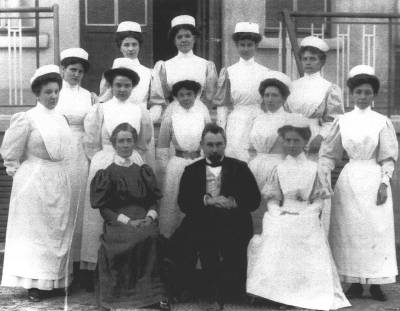 Edith Cavell with Dr Depage and the nursing staff at the Clinique.
Edith Cavell with Dr Depage and the nursing staff at the Clinique.
By August 3rd 1914, she was back in Brussels despatching the Dutch and German nurses home and impressing on the others that their first duty was to care for the wounded irrespective of nationality. The clinic became a Red Cross Hospital, German soldiers receiving the same attention as Belgian. When Brussels fell, the Germans commandeered the Royal Palace for their own wounded and 60 English nurses were sent home. Edith Cavell and her chief assistant, Miss Wilkins remained.
The initial German advance was successful and the British retreated from Mons and the French were driven back, many in both armies being cut off. In the Autumn of 1914, two stranded British soldiers found their way to Nurse Cavell’s training school and were sheltered for two weeks. Others followed, all of them spirited away to neutral territory in Holland. One from the 1st Battalion of the Norfolk Regiment recognised a print of Norwich Cathedral on the wall of her office; she was always delighted to receive someone from her beloved Norfolk, asking a private Arthur Wood to take home her Bible and a letter for her Mother. Quickly an ‘underground’ lifeline was established, masterminded by the Prince and Princess de Croy at a chateau at Mons. Guides were organised by Philippe Baucq, an architect, and some 200 allied soldiers helped to escape. (The password was ‘Yorc’ – Croy backwards). This organisation lasted for almost a year, despite the risks. All those involved knew they could be shot for harbouring allied soldiers.
Edith also faced a moral dilemma. As a ‘protected’ member of the Red Cross, she should have remained aloof. But like Dietrich Bonhoeffer in the next war, she was prepared to sacrifice her conscience for the sake of her fellow men. To her, the protection, the concealment and the smuggling away of hunted men was as humanitarian an act as the tending of the sick and wounded. Edith was prepared to face what she understood to be the just consequences. By August 1915 a Belgian ‘collaborator’ had passed through Edith’s hands. The school was searched while a soldier slipped out through the back garden, Nurse Cavell remained calm – no incriminating papers were ever found (her Diary she sewed up in a cushion). Edith was too thorough and she had even managed to keep her ‘underground’ activities from her nurses so as not to incriminate them.
Two members of the escape route team were arrested on July 31st, 1915. Five days later, Nurse Cavell was interned. During her interrogation she was told that the other prisoners had confessed. In her naivete she believed them and revealed everything. Many people think that Edith ‘shopped’ her compatriots simply because, like George Washington, she could ‘never tell a lie’. This was far too simplistic an explanation. Edith was willing to abuse her position in the Red Cross to help her fellow countrymen in need. She would have equally protected her colleagues at the risk of compromising her own conscience even though this would have been painful and contrary to her upbringing. She was trained to protect life, even at the risk of her own. “Had I not helped”, she said, “they would have been shot”. The explanation is that Edith simply trusted her captors, was glad to make a clean breast of it and willingly condemned herself by freely admitting at her trial that she had “successfully conducted allied soldiers to the enemy of the German people”. Herein lay her ‘guilt’, and this was a capital offence under the German penal code. She was guilty, so they must shoot her.

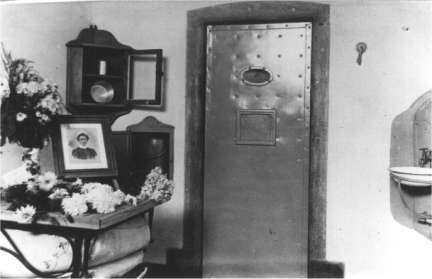
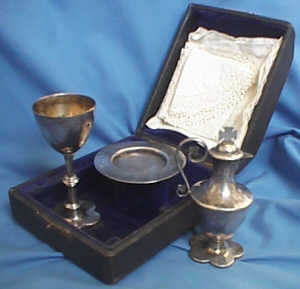
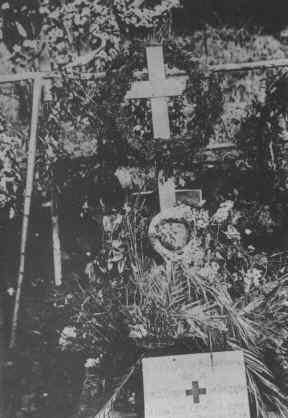
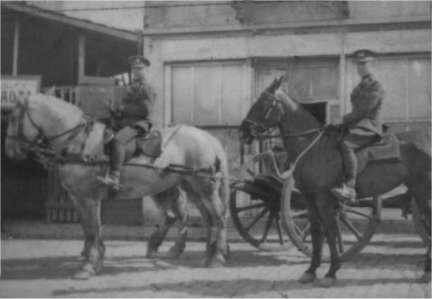
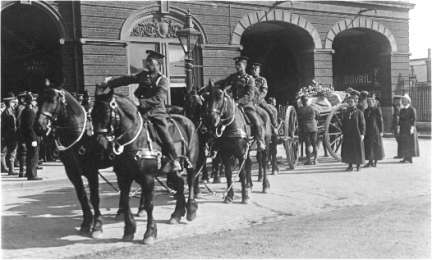
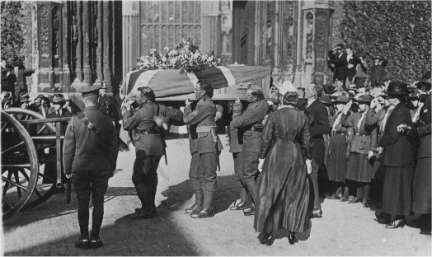
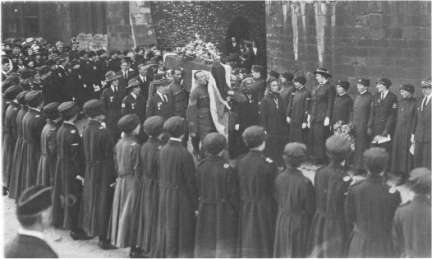
Recent Comments